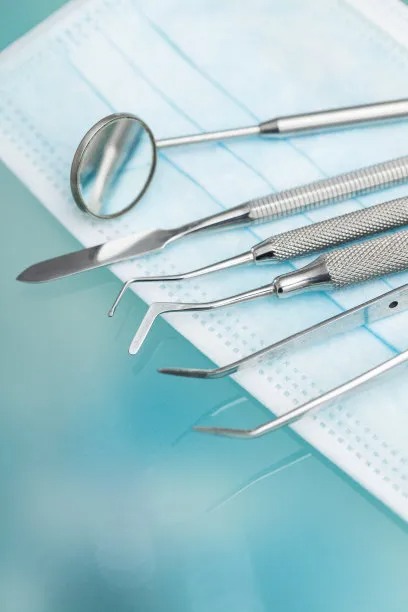Understanding the Impact of Periodontal Disease on Overall Health and Innovations in Treatment Approaches for Better Outcomes
Summary: Periodontal disease is more than just an oral health concern; it has significant implications for overall health. This article explores how periodontal disease impacts systemic health, the mechanisms behind this relationship, current treatment innovations, and future directions for improving patient outcomes. By understanding these aspects, we can appreciate the importance of periodontal health and the continuous advancement in treatment methodologies that pave the way for better overall health outcomes.
1. The Interconnection Between Oral and Overall Health

The relationship between periodontal disease and overall health is increasingly recognized in the medical community. Research indicates that chronic inflammation caused by periodontal disease can exacerbate systemic conditions such as heart disease, diabetes, and respiratory diseases. The mouth serves as an entrance to the body, and the bacteria associated with periodontal disease can enter the bloodstream, contributing to inflammation throughout other organs.
Additionally, studies have shown that individuals with diabetes are at a higher risk of developing periodontal disease, creating a vicious cycle. Glycemic control may deteriorate due to infections in the mouth, leading to a worsening of both dental and general health. Understanding this interdependence emphasizes the importance of regular dental check-ups and maintaining oral hygiene.
Moreover, links have been established between periodontal health and conditions like Alzheimer’s disease and various cancers. As research continues to unfold, the significance of oral health in predicting and preventing systemic diseases becomes more evident, reinforcing the need for an integrative health approach.
2. Mechanisms Behind Periodontal Disease Effects
The mechanisms by which periodontal disease influences overall health primarily involve inflammation and bacteria. When periodontal disease occurs, it triggers a localized inflammatory response. This inflammation can then lead to systemic inflammation, affecting various body systems. Pro-inflammatory cytokines released during this process can travel through the bloodstream, causing or worsening health issues elsewhere.
The role of microbiota is another crucial aspect to consider. The mouth houses diverse microorganisms, and periodontal disease tends to alter this balance, leading to dysbiosis. Pathogenic bacteria can impact the immune response and increase the risk of infections and chronic diseases. Innovations in microbiome research are now beginning to explore how periodontal health may be maintained through targeted lifestyle and therapeutic interventions.
Additionally, the impact of stress on periodontal disease cannot be underestimated. Chronic stress contributes not only to the development of periodontal conditions but also to the worsening of existing health problems, further complicating the interplay between oral and systemic health. Understanding these mechanisms can help tailor effective treatments and preventative measures.
3. Innovations in Treatment Approaches
With advancements in dental technology, several innovative treatments for periodontal disease have emerged. Laser therapy, for instance, is gaining recognition for its ability to effectively reduce inflammation and bacterial load while promoting quicker recovery times. Unlike traditional surgical methods, laser treatments minimize discomfort and promote healing, making them an attractive option for patients.
Regenerative procedures utilizing growth factors and stem cells are also at the forefront of periodontal treatment. These approaches aim not only to heal diseased tissue but also to regenerate lost bone and periodontal structures. Clinical studies have shown promising results, indicating that these innovations may significantly improve long-term outcomes for patients suffering from periodontal disease.
Furthermore, the integration of technology in diagnostics has transformed how periodontal disease is treated. Digital imaging and AI-driven analytics allow for early detection and personalized treatment plans based on individual risk factors. By advancing treatment approaches, dental professionals can improve patient compliance and satisfaction, leading to better health outcomes overall.
4. Future Directions for Improved Outcomes
Looking ahead, the focus will shift towards preventive care and patient education regarding periodontal disease. With rising awareness about its impacts on overall health, public health initiatives are crucial in creating comprehensive oral health programs. Encouraging proper dental hygiene at an early age can significantly reduce the prevalence of periodontal diseases.
Moreover, research into the microbiomes role in periodontal disease offers exciting potential for future therapies. Probiotic treatments may help restore healthy oral flora and reduce pathogenic bacteria, presenting an alternative approach to traditional antibiotics. These possibilities could revolutionize how practitioners approach periodontal treatment.
Lastly, multidisciplinary collaboration among healthcare providers can lead to more holistic care strategies. By bridging the gap between dental and medical practices, patients can receive coordinated care that considers the interrelationships between oral and overall health. This collaboration will facilitate improved health outcomes and a higher quality of life for individuals affected by periodontal disease.
Summary:
Understanding the intricate links between periodontal disease and overall health highlights the urgency of addressing oral health in a broader medical context. Innovations in treatment not only enhance dental care but also contribute significantly to preventing systemic diseases. With new research and collaborative care approaches, we can look forward to a healthier future, recognizing that oral health is indeed essential to overall well-being.
This article is compiled by Vickong Dental and the content is for reference only.


